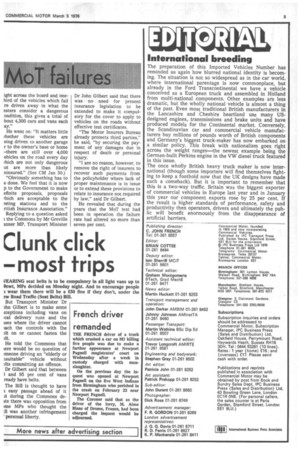International breeding
Page 7

If you've noticed an error in this article please click here to report it so we can fix it.
The preparation of this Imported Vehicles Number has reminded us again how blurred national identity is becoming. The situation is not so widespread as in the car world, where international parentage is now commonplace, but already in the Ford Transcontinental we have a vehicle conceived as a European truck and assembled in Holland from multi-national components. Other examples are less dramatic, but the wholly national vehicle is almost a thing of the past. Even most traditional British manufacturers in the Lancashire and Cheshire heartland use many USdesigned engines, transmissions and brake units and have produced models for the Continental market. Conversely, the Scandinavian car and commercial vehicle manufacturers buy millions of pounds worth of British components and Germany's biggest truck-maker has now embarked on a similar policy. This break with nationalism goes right across the weight ranges—the newest example being the German-built Perkins engine in the VW diesel truck featured in this issue.
The once wholly British heavy truck maker is now international (though some importers will find themselves fighting to keep a foothold now that the UK designs have made such a comeback). But it is important to remember that this is a two-way traffic. Britain was the biggest exporter of commercial vehicles in Europe last year and in January this year our component exports rose by 25 per cent. If the result is higher standards of performance, safety and productivity then operators, drivers and ultimately the public will benefit enormously from the disappearance of artificial barriers.




















































































































































